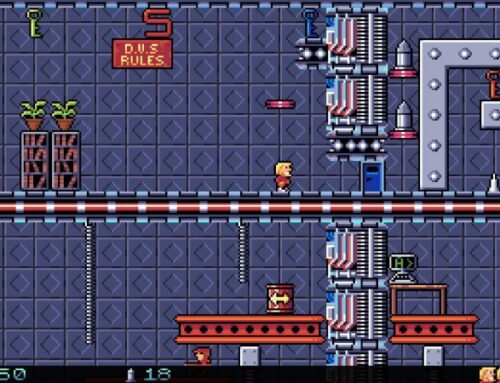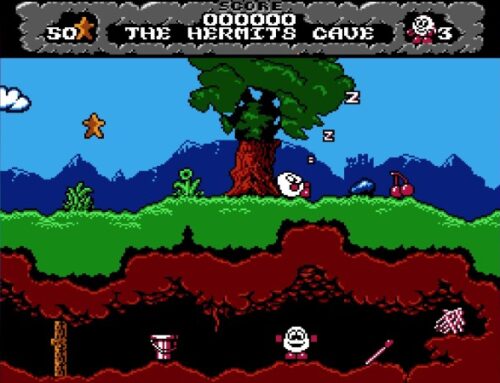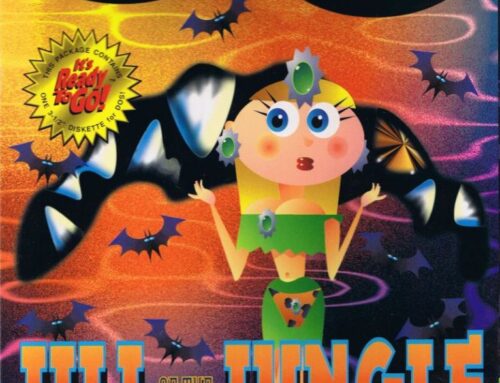Those of you who keep one foot in the past and one foot in today’s gaming scene will be well aware that PlatinumGames’ Sol Cresta is out on February 22, 2022 — and that Limited Run Games are doing a limited physical release of what will hopefully be a mdoern classic shoot ’em up. With that in mind, we covered the series’ genesis Moon Cresta a while back — so today it’s time to look at its follow-up Terra Cresta.
Moon Cresta was, as we talked about previously, one of the games that really put Nichibutsu on the map as a contender in the arcade gaming space. It took a while for it to get a sequel, though — over five years, in fact. But by the time late 1985 rolled around, players were well and truly entranced by that sequel, Terra Cresta; Japan’s Game Machine magazine reported the game as being the third most successful table arcade unit of the month in their October 1985 issue.

As you might expect from a game that came out five years after its predecessor, Terra Cresta is a very different game to Moon Cresta. While Moon Cresta was a fixed shoot ’em up reminiscent of titles like Namco’s Galaxian and SNK’s Ozma Wars, Terra Cresta is a vertically scrolling shoot ’em up with a passing resemblance to Namco’s 1982 hit Xevious.
Terra Cresta is no Xevious clone, however. While it is a vertically scrolling shoot ’em up with a perpetually scrolling, seemingly endless “stage” to do battle over, Terra Cresta makes use of a highly creative power-up system that draws inspiration from Moon Cresta while simultaneously doing its own distinct thing. Also there are dinosaurs, for seemingly no reason other than the fact that it’s awesome. I can get behind that.
You may recall that in Moon Cresta, so long as you had enough lives remaining, you got frequent opportunities to attach multiple ships together to increase your firepower. The same is true in Terra Cresta, though here they appear in subterranean bunkers which must be revealed by shooting numbered tokens on the ground. Each number represents a different part which can be bolted on to your base Wing Galibur craft, and each has a distinct purpose.

Part 2, for example, increases the ship’s frontal firepower. Part 3 allows it to fire behind. Part 4 further increases frontal firepower with powerful missiles. And Part 5, arguably the most useless, provides a short-range “shield” on the back of the ship which protects against kamikaze attacks from the rear. If you’re good enough at the game, you can attach all these parts onto your ship simultaneously.
That’s not all, though. The extra parts also act as a form of “armour” for your main craft, since getting hit while you have one or more parts attached to you simply destroys the parts rather than causing you to lose a life. Of course, you lose the parts’ functionality in the process, but the game provides frequent opportunities to recover them so long as you pay attention to what’s going on!
On top of that, you also have access to a “transform” function, which allows you to split the attached parts off from your main ship and perform various special attacks according to how many parts you currently have. With one extra part, for example, you fly in parallel formation and fire a powerful, wide beam between the pair of you. With two or more, your ship and all the parts fly in a triangular formation, setting off strong spread shots.

And best of all, none of the parts are vulnerable while in this “transformed” form — only your original ship is. The trade-off, however, is that if your original ship is hit while in a transformed formation, you will immediately lose a life rather than enjoying the additional parts’ protection.
There’s incentive to use this feature quite often, since you’ll run into powerful quasi-boss enemies at fairly regular intervals, plus each new part you pick up adds another opportunity to transform to the mix. But at the same time, you’ll want to try and nab all the possible parts for your ship, because transforming with everything attached allows you to transform into a completely invincible phoenix, wreaking unlimited death and destruction to your foes for a limited period.
There’s an absolutely fantastic sense of risk versus reward at play nearly constantly in Terra Cresta. The bunkers that house the ship parts crop up very frequently, so you’ll need to make split-second decisions as to whether you can afford to try and grab the part or if you should clear the screen first. And with no “bomb” attack as in many other vertically scrolling shmups — the “transform” ability replaces it in Terra Cresta — you’ll often have to work quite hard to clear a path through the more dense formations.

Terra Cresta is one of those shoot ’em ups that, when you stop to analyse what is going on at any given moment, it doesn’t look like it should be too difficult. There are never that many enemies on screen at once, and the bullet patterns are not at all dense. And yet it’s still a satisfyingly challenging game; while the game doesn’t specifically encourage you to or reward you for taking risks, it’s hard not to get wrapped up in what is going on — and the result is almost always a raging fireball at your expense.
Some modern commentators have likened the relationship between Terra Cresta and its predecessor to the advancements between the original Mario Bros. and its “Super” incarnation on the NES — and this is absolutely a fair comparison. While in both cases, the later games are more advanced takes on a classic genre, they still retain enough about the original to remain a recognisable part of the same series.
It remains to be seen, of course, if Sol Cresta will be able to live up to the proud legacy of this series — but with PlatinumGames behind the mechanics and Yuzo Koshiro on soundtrack duties, it’s hard to imagine that they’ll mess this one up. I guess we’ll find out on 2/2/22!
Terra Cresta is available as part of Hamster’s Arcade Archives collection on Nintendo Switch and PlayStation 4. Screenshots from the Switch version.




